Search results
Directory:
Tags:
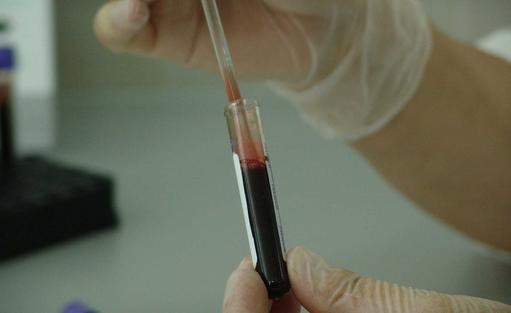
|
Directory:
Tags:
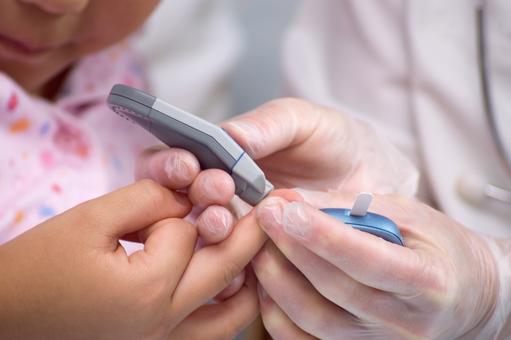
- A 2017 research project found that only 6 out of 18 FDA-approved blood glucose monitoring (BGM) systems tested were accurate
- Each day BGM systems are used by millions of people with diabetes to help them self-manage their condition, and avoid devastating and costly complications
- Thousands of similar smart devices support the prevention and self management of other chronic lifetime conditions, whose prevalence levels are high
- The increasing demand for healthcare, its escalating costs, and rapidly evolving technologies are driving the growth of such remote self-managed devices
- The most valuable aspect of such devices is the data they produce
- These data tend to be under valued and under utilized by healthcare providers
- This has created an opportunity for giant technology companies to enter the healthcare market with a plethora of smart devices and start utilizing the data they collect to enhance patient outcomes and lower costs
- Giant technology companies could dis-intermediate GPs and re-engineer primary care
Digital blood glucose monitors and the disruptive impact of giant tech companies on healthcare
A 2017 research project, which tested 18 FDA-approved digital blood glucose monitoring (BGM) systems, which are used daily by millions of people with diabetes to check the concentration of glucose in their blood, found that only 6 were accurate. The research, led by David Klonoff of the Diabetes Research Institute at San Mateo, California, was funded by Abbott Laboratories.
This Commentary describes both traditional and next-generation BGM systems, and Klonoff’s research. The Commentary suggests that BGM systems are just one part of a vast, global, rapidly growing market for consumer healthcare devices, and argues that the most valuable aspect of these devices is the data they collect. With some notable exceptions, healthcare professionals do not optimally utilize these data to enhance care and reduce costs. This has created for an opportunity for technology companies to enter the healthcare market and re-engineer primary care. The one thing, which might slow the march of giant technology companies into mainstream healthcare, is the privacy issue.
Traditional and next-generation BGM systems
Next generation BGM system
Abbott Laboratories Inc. markets a BGM system, which eliminates the need for routine finger pricks that are necessary when using traditional glucose monitors. Instead of finger pricks and strips, the BGM system, which measures interstitial fluid glucose levels, comprises a small sensor and a reader. An optional companion app for Android mobile devices is also available. The sensor is a few centimetres in diameter and is designed to stay in place for 10 days. It is applied to the skin, usually on the upper arm. A thin (0.4 mm), flexible and sterile fibre within the sensor is inserted in the skin to a depth of 5 mm. The fibre draws interstitial fluid from the muscle into the sensor, where glucose levels are automatically measured every minute and stored at 15-minute intervals for 8 hours. Glucose levels can be seen at any time by scanning the reader over the sensor. When scanned the sensor provides an answer immediately. It also shows an 8-hour history of your blood glucose levels, and a trend arrow showing the direction your glucose is heading. The device avoids the pain, and inconvenience caused by finger-prick sampling, which can deter people with diabetes from taking regular measurements. In the UK the system costs £58 for the reader, plus £58 for a disposable sensor, which must be replaced every 10 days and from November 2017 have been available on the NHS. Abbott Laboratories is a global NASDAQ traded US MedTech Company, with a market cap of US$86bn; annual revenues of US$21bn, and a diabetes care division, which produces annual revenues of some US$600m.
BGM systems used by Klonoff and his team for their research were acquired over-the-counter and independent of their manufacturers. All were tested according to a protocol developed by a panel of experts in BGM surveillance testing.
Klonoff’s research specified that for a BGM system to be compliant, a blood glucose value must be within 15% of a reference plasma value for a blood glucose >100 mg/dl, and within 15 mg/dl of a reference plasma value for a blood glucose approved” a BGM system had to pass all 3 trials. Only 6 out of 18 passed by achieving an overall compliance rate of 95% or higher.
|
|
What Is IVF Treatment?
n vitro preparation, or IVF treatment, is a sort of helped regenerative innovation (ART) that includes treating the eggs with sperm in a lab setting. In the regular request of things, the preparation cycle happens inside the human body, in a lady's fallopian cylinders to be exact. The term is gotten from Latin, where 'vitro' signifies glass. So 'in vitro treatment' is only 'in glass preparation'. It is a reference to the research center petri dish in which the preparation of the egg happens.
Upon the egg's treatment, undeveloped organisms are framed which are then moved into the planning mother's uterus (belly). The pregnancy test is performed fourteen days after the fact after the incipient organism move with the expectation of IVF achievement.
When Is IVF Treatment Recommended?
IVF can treat numerous causes of infertility. These include
Ladies experiencing moderate to serious endometriosis and who don't react decidedly to rehashed IUI treatment.
To some degree or completely obstructed or harmed fallopian tubes. This can be the aftereffect of past regenerative medical procedures or pelvic incendiary illness.
Serious male factor barrenness can be brought about by low sperm count or helpless sperm motility. In such cases, IVF-ICSI is suggested where ICSI treatment is an additional stage in the IVF technique.
Ladies of cutting-edge conceptive age. In such cases, time is of the quintessence and the achievement rate utilizing medicines other than IVF treatment is low.
For unexplained richness issues where the specific reason for fruitlessness has not been set up and different medicines have fizzled.
1. Wellspring IVF & Women’s Hospital Ahmedabad, India
The clinic gives something other than an IVF treatment. You can likewise discover different medicines identified with IVF, barrenness, and ART (Assisted Reproductive Technology). A portion of these is richness treatment (male and female), endoscopy, maternity, and gynecology. This broad scope of administrations is likewise one reason why they are on the first spot on this list and patient inclinations.
The clinic's chief and furthermore boss ripeness expert Dr. Pranay Shah is a generally respected IVF and barrenness subject matter expert. Clinics target giving medicines that are financially savvy just as guarantee a triumph rate. It has a warm and strong climate, and each specialist, nurture, and other clinical staff shows restraint fulfillment situated.
Simple to situate, as it's in one of Ahmedabad's most evolved regions. Their essential objective is to give exceptionally moderate IVF medicines so they. can reach nearly everybody looking for helped conceptive medicines. In 2018 Wellspring was granted a lofty honor, "Best IVF Center in India" by India's most believed medical services grants 2018.
2. Wing's IVF Women Hospital Ahmedabad, Gujarat
Wing's IVF Women Hospital brags 15 years of experience, and in excess of 8000 live births through IVF. It is among the most prestigious and believed IVF focuses in Ahemdabad with its condition of craftsmanship innovation and compelling and productive administration. The middle is viewed as a pioneer in cutting-edge IVF methods like PGT and ERA with experience of in excess of 1200 cases.
It offers types of assistance like male and female fruitlessness treatment, extraordinary barrenness treatment program for individuals with weight and diabetes, undeveloped organism, sperm, and egg freezing, IVF, ICSI, IUI, Preimplantation hereditary diagnostics, Blastocyst culture, and other greater fruitfulness administrations.
The middle additionally has its branches in Rajkot, Surat, Udaipur, and Nairobi. As their name, 'wings' guarantees smooth and solid administrations and medicines to the barren couple. The clinical group is additionally loaded up with the master and experienced staff that offers all-around help to the patients.
Vinsfertility is India's Leading IVF centre in Ahmedabad, Gujarat, and is likewise the most moderate and practical. We perceive the worth of physical, mental, and monetary difficulties of infertile(IVF) couples and that is exactly why our IVF evaluating strategy is extremely clear and moderate to all. Sunflowers ladies' medical clinic has the most elevated achievement rates in IVF therapy at the most moderate expense.
Low-cost IVF treatment in Ahmedabad, India with extremely high appraisals and tributes of richness specialists, Vinsfertility IVF Center is the principal fascination for International Patients to have savvy IVF treatment in Ahmedabad. Aside from IVF, Surrogacy costs are additionally most minimal in India and Gujarat. Surrogacy is the most suitable decision for people who can not convey a pregnancy in their own uterus because of various clinical and careful reasons. Patients are mentioned to contact for surrogacy cost exhaustively.
For more information, contact us at
website->Vinsfertility.com
Facebook->https://www.facebook.com/VinsfertilityIVFcentre Instagram->https://www.instagram.com/vinsfertility/
Linkedin->https://www.linkedin.com/company/31232847/admin/
Youtube->https://www.youtube.com/channel/UCmx0IqiCF32tL0sC6KEonYA
Mob. no. - +91 8448879134
Directory:
Tags:
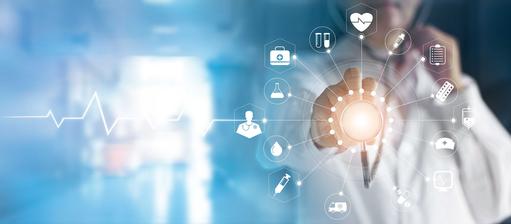
|
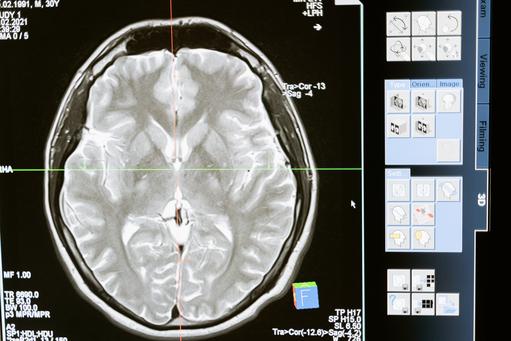
|
In January 2013 Andrew Marr, the 53-year-old BBC TV presenter and journalist, had a stroke after a bout of intensive exercise on a rowing machine in a gym. What is a stroke? A stroke is a serious medical emergency where the supply of blood to the brain is disrupted. In over 80% of cases, strokes usually happen because a blood clot blocks the blood supply to the brain. They can also happen when a weakened blood vessel that supplies the brain bursts and causes brain damage, known as a haemorrhagic stroke. Andrew Marr's stroke prompted two questions: (i) Do younger healthy people have strokes? and (ii) Does physical exercise contribute to strokes? Are stroke victims getting younger? Andrew Marr was one of 152,000 people in the UK who have strokes each year. Stroke is the third largest cause of death in the UK and the largest single cause of severe disability. There are approximately 1.1 million stroke survivors living in the UK and each year strokes cost the NHS £2.8 billion. The picture is no better in the US, where every 40 seconds a person has a stroke, each year strokes kill 130,000 and cost the US $38.6. Strokes are uncommon, but not rare in men in their fifties like Andrew Marr. Recent research suggests that strokes among the elderly are declining, while strokes among younger people are increasing. Between 1998 and 1999 in the UK, 9,000 people under 55 were admitted to hospital due to stroke. By 2011 this figure had risen to more than 1,600. It is not altogether clear why stroke is increasing among younger people, although experts note its correlation with type 2 diabetes. The importance of specialist stroke units Andrew Marr said that he believed what he read, that taking, "Very intensive exercise in short bursts is the way to health." Just before his stroke he said, "I went onto a rowing machine and gave it everything I had and had a strange feeling afterwards: a blinding headache and flashes of light". He took no notice and went home. The following morning he woke up lying on the floor unable to move. The most important care for people with any form of stroke is prompt admission to a specialist stroke unit, but even with prompt treatment a stroke can often be fatal. |
|
|
Directory:
Tags:
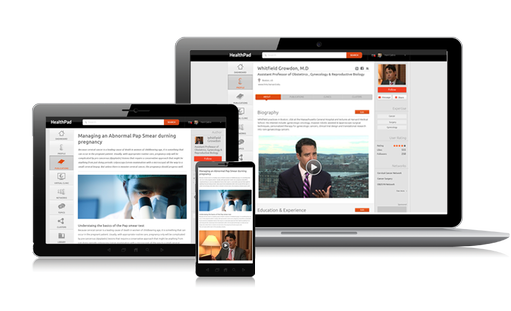
|
Patients want health information in ways that doctors are not providing.
Patients want reliable answers to simple questions about the presentation, diagnosis, treatment options, side effects, and aftercare of their conditions. They want answers at speed, and increasingly delivered to their smartphones in video formats. With difficulties gaining face-time with doctors, patients turn to the Internet. Worldwide, some three billion health-related Internet searches are made each year. Patients experience difficulty finding reliable answers to their basic questions among more than two billion health websites. According to research published by the American National Institute of Health, 33% of adults who search the Internet for health information become confused by what they find. This frustrates their therapeutic journeys and makes for fraught doctor-patient relations. Things are changing, however, and now patients have a new free-and-easy-to-use online platform, www.healthpad.net. This provides patients with video answers to their FAQs that can be accessed at speed at anytime, from anywhere on any hand held device. |
|
|
|
|
|
|
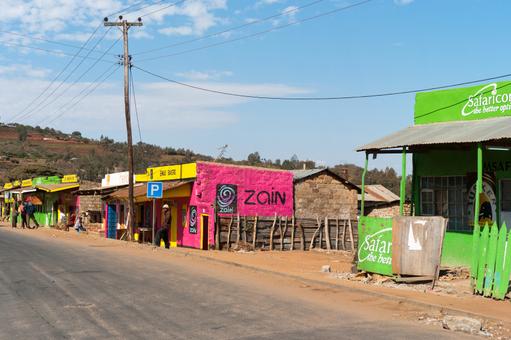
Africa is sick. Ninety per cent of the world’s cholera cases occur in Africa. Meningococcal meningitis is epidemic in most African countries. Yellow fever is endemic in 23 African countries. Africa has more than 28 million HIV/AIDS cases and 75% of the world’s AIDS population live in sub-Saharan Africa. Of the one million annual malaria deaths, 90% occur in the same region. Measles are common throughout Africa and result in high levels of morbidity and mortality. Lassa fever accounts for about 0.4 million deaths each year and avian influenza is endemic in many African countries.
This is not the whole story. In addition to being plagued with infectious diseases, Africa has a neglected epidemic of chronic non-communicable disease (NCDs). Over the next decade the continent is projected to experience the largest increase in mortality rates from cardiovascular disease, cancer, respiratory disease and diabetes.
Although, international health agencies and national governments are beginning to recognize and confront the significant global burden of NCDs, its awareness in Africa is still relatively low and political leaders there have not shown much interest in NCDs and this has been reflected in the allocation of health budgets. This neglect compounds Africa’s healthcare and development challenges, since the projected rise in NCDs throughout the continent is expected to occur on a compressed timeline compared to high income countries and Africa has restricted capacity to respond to the magnitude of its disease burden.
International organisations have flagged the magnitude and the urgency of the challenge. Healthcare advice from numerous non government agencies in the developed world on ways to deal with Africa’s escalating disease burden is forthcoming. This has been especially the case over the past decade when humanitarian aid budgets have peaked. Agency recommendations have been high on overall strategy and low on cost effective and scalable means of delivering such strategy.
|
Most advice includes epidemiological surveillance, primary programmes that target healthy populations and secondary preventative programmes aimed at reducing complications in affected populations. All agencies agree that human resources are crucial to viable African health systems. Hitherto, human resources have been a neglected component of African healthcare. A common implementation strategy recommended and implemented by several non government agencies is to organise health workers from the developed world to spend time in African countries teaching the teachers. To assist such programmes, some agencies recommend that African governments build more roads to enable health workers to gain better access to rural areas where healthcare provision is poor or non-existent. Education is crucially important, but the key question is, how do you educate enough people to make a difference? Africa has a population of over one billion; about 15% of global population,but only 2% of global GDP and its population is projected to double by 2050. Africa is exposed to multiple health risks combined with inadequate preventative healthcare and education. Projected trends of Africa’s disease burden and consequent rates of morbidity and mortality highlight the inadequacy of some popular traditional response to Africa’s healthcare challenge. In addition to the enormity of its disease burden, Africa, which has weak health systems, also has significant long standing structural, logistic, human and organisational barriers to the implementation of well intended traditionalhealthcare programmes many of which focus on teaching the teachers. So, despite well intended traditional interventions, Africa’s disease burden continues to grow and its overall effect is likely to decrease productivity, lower competiveness, increase fiscal pressure, expand poverty and create greater inequity in most African countries. More scalable and effective solutions are required. These should build on Africa’s strength, which are her established and fast growing telecommunications networks and her relative absence of healthcare legacy systems. Current trends in disease prevalence and treatment costs will force African countries to make deliberate and innovative choices in order to address their disease burdens in sustainable and effective ways. Such choices are more likely to employ modern technology than to build more roads. In Africa, mobile penetration exceeds infrastructure development, including paved roads and access to electricity and the internet. According to the World Health Organization’s (WHO) Global Observatory for mHealth some 40 African countries are using mobile health services. |
|
Africa is the fastest-growing mobile telephone market in the world and the biggest after Asia. Over the past five years the number of subscribers on the Continent has grown some 20% each year. By the end of 2012 it is projected that Africa will have 735 million mobile subscribers.The nature of Africa’s mobilemarket is also changing. Today, smart phone penetration rate in Africa is estimated to be about 18%: almost one in five and projected to reach 40% by 2015. While patchy, mobile penetration rates in Sub Saharan Africa, where the disease burden is greatest, are not low and the rate of smart phone penetration is estimated to be about 20%. In 2007 Sarafaricom, a leading mobile phone network in Kenya, launched M-Pesa, a mobile phone‐based payment and money transfer service for people too poor to have a bank account. M-Pesa spread quickly and has become the most successful mobile phone‐based financial service in the developing world. Today there are some 17 million registered M-Pesa accounts in Kenya. It is only a small step to offer a mobile health information service for all M-Pesa account holders. Africa’s new highways to carry healthcare information are virtual rather than physical. They already exist, they are extensive and, over the course of the next five years, are projected to rapidly expand and improve. With such an infrastructure one teacher can educate millions of people, which is significantly more cost effective and sustainable than traditional healthcare programmes. Further, Africa will not be able to diagnose and treat its way out of its disease burden. Increasingly, healthcare programmes will need to emphasis prevention, alongside efforts to strengthen health systems to provide early diagnosis; targeted cost-effective and scalable treatments that are fiscally sustainable depending on countries’ epidemiological profile. Such solutions will need to fit complex, overstretched and under-resourced health systems; address the enormity of the escalating disease burden and bring about desired changes in specific African countries’ health systems. This cannot be achieved only by repeating traditional healthcare programmes delivered by non government agencies from developed countries. According to the International Telecommunications Union there are some 5 billion wireless subscribers in the world today and over 70% of these reside in low and middle income countries. In 2011, Africa held its first mobile health summit in South Africa and firmly put mobile telephony at the centre of improving healthcare in poor countries. A 2011 WHO global survey of the use of mobile telephony in healthcare; mHealth, reported that commercial wireless signals cover over 85% of the world’s population. Eighty three per cent of the 122 countries surveyed in the Report used mobile phones for free emergency calls, text messaging and pill reminders. Modern technologies have the scalability to provide the basis for Africa to develop country-congruent health policies that are locally applicable. Technological systems such as mobile telephony, the internet and biometric identification, which are appropriately implemented, have the capacity to empower individuals and encourage them to take care of their own health. Further, such technologies have the capacity to improve targeting, reduce fraud and increase access to healthcare. Technologically based healthcare strategies offer Africa an opportunity to leapfrog its ineffective traditional healthcare systems and begin to manage the enormity of its disease burden and, in turn, may benefit the whole world by demonstrating the benefits of patient centred healthcare. |
Directory:
Tags:

- Each year unhealthy diets are linked to 11m deaths worldwide a global study concludes
- Red and processed meat not only cause disease and premature death from chronic non-communicable diseases (NCD) but also put the planet at unnecessary risk
- Evidence suggests that the health benefits of a Mediterranean diet reduces the risk of NCDs and is better for the Planet
Eat like Greeks, live healthier lives and save our planet
|
|
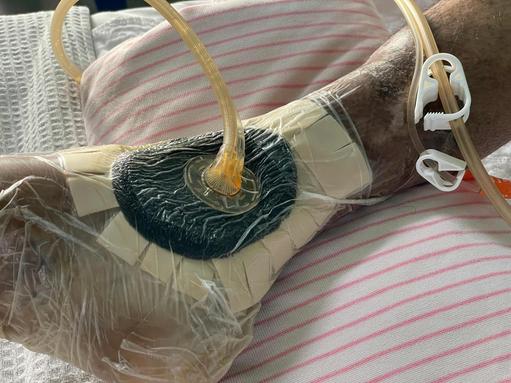
|
|
|
|
|
|
Directory:
Tags:
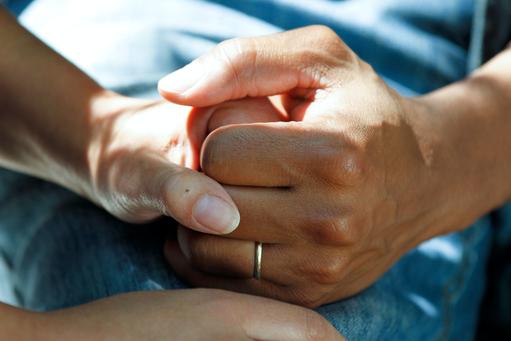
|















